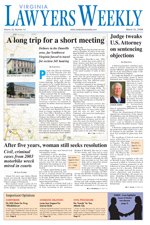It looks so easy when they do it on Antiques Roadshow.
Experts on the popular public television series who examine stuff brought down from the attic appear to take their cues from certain elements of a painting or an objet d’art, and then fill in the blanks to come up with an estimated value.
But unfortunately for two federal employees who sued over a missing painting, it takes more to recover damages in a court of law.
Richard and Donna Riney had a painting stored when they were assigned to positions abroad. When they observed mold on the stored painting upon their return, the storage company hired a mold remediation company to treat the mold. The remediation company later admitted that it had not restored the painting, but instead had discarded it.
In Riney v. Park Moving & Storage Co. (VLW 007-8-140), the Rineys argued the painting had a value of $80,000. They also argued in a companion case (VLW 007-8-139) that the destruction of the painting entitled them to certain assumptions in proving the worth of the painting.
But Fairfax Circuit Judge Arthur B. Vieregg rejected expert testimony based on assumptions that the painting had been created by a European master of the top tier within a 200-year period between the late 17th and 19th centuries, and therefore had a value of at least $80,000.
Noting that the plaintiffs apparently never bothered to have the painting appraised or insured, Vieregg said the owners simply presented no authority to support the requested damages, absent the owners’ groundless testimony of what the painting was worth.
Instead, the Rineys were entitled to $2,500, the value conceded by the remediation company, plus costs, the court held.
Subscribe to:
Post Comments (Atom)

No comments:
Post a Comment